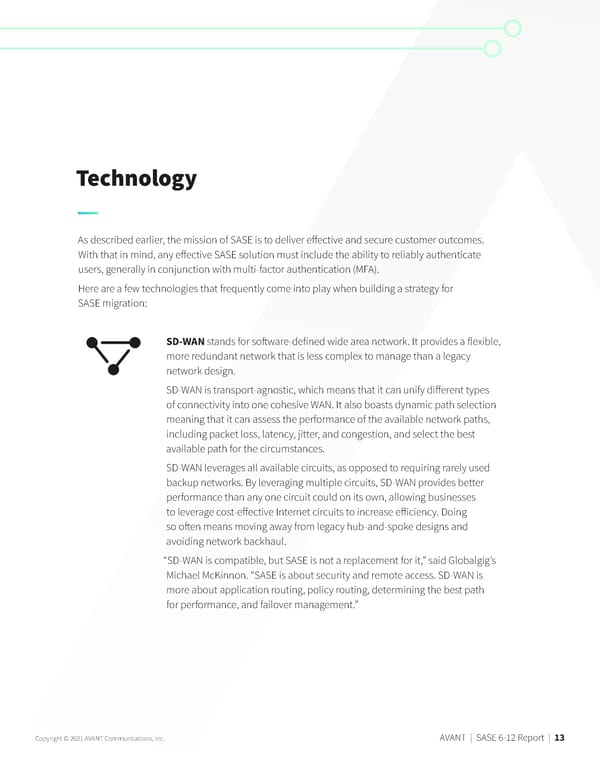Technology As described earlier, the mission of SASE is to deliver effective and secure customer outcomes. With that in mind, any effective SASE solution must include the ability to reliably authenticate users, generally in conjunction with multi-factor authentication (MFA). Here are a few technologies that frequently come into play when building a strategy for SASE migration: SD-WAN stands for software-defined wide area network. It provides a flexible, more redundant network that is less complex to manage than a legacy network design. SD-WAN is transport-agnostic, which means that it can unify different types of connectivity into one cohesive WAN. It also boasts dynamic path selection meaning that it can assess the performance of the available network paths, including packet loss, latency, jitter, and congestion, and select the best available path for the circumstances. SD-WAN leverages all available circuits, as opposed to requiring rarely used backup networks. By leveraging multiple circuits, SD-WAN provides better performance than any one circuit could on its own, allowing businesses to leverage cost-effective Internet circuits to increase efficiency. Doing so often means moving away from legacy hub-and-spoke designs and avoiding network backhaul. “SD-WAN is compatible, but SASE is not a replacement for it,” said Globalgig’s Michael McKinnon. “SASE is about security and remote access. SD-WAN is more about application routing, policy routing, determining the best path for performance, and failover management.” Copyright © 2021 AVANT Communications, Inc. AVANT | SASE 6-12 Report | 13
 SASE Report Page 12 Page 14
SASE Report Page 12 Page 14